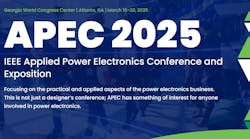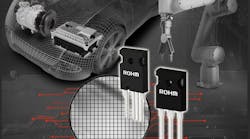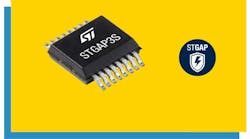EV V2G Standards, IGBTs Remain Relevant, First Electric Aircraft Hit the Market
What you’ll learn:
- How the Linux Foundation is using an open-source initiative to accelerate the development of interoperable standards for vehicle-to-grid (V2G) EV chargers.
- Electric aviation has moved from theory to reality as the first commercially available battery-powered trainer aircraft enters the market.
- Innovations in IGBT technology are highlighted in this month’s ProductBites.
- If you plan to attend the 2025 APEC conference in Atlanta, ED’s Lee Goldberg invites you to join him for coffee at one of our (in)famous reader/editor meetups.
While it may be a decade or more before electric airliners begin to enter mainstream markets, some of the pilots who will be flying them are already receiving their primary flight training in battery-powered trainers. Here’s a quick preview of the latest e-trainer, which promises to lower the cost, and the carbon footprint, of pilot training.
Can the Linux Foundation’s Energy Initiative help untangle the fractured patchwork of protocols and grid codes that make vehicle-to-grid (V2G) systems so difficult to standardize? A recent partnership with the IEA will use the LF’s open-source approach to energy-related protocols to resolve interoperability problems between EVs and charging stations—and between charging stations and the power providers that feed them.
If you're planning on attending the 40th Annual Applied Power Electronics Conference (APEC), March 16-20 in Atlanta, please consider joining Electronic Design’s Lee Goldberg (and other surprise guests) for one of our (in)famous Reader/Editor meetups. These lively gatherings feature free coffee and a chance to exchange news, knowledge, and the hottest industry gossip with other members of the ED community.
ProductBites
This month’s product showcase highlights advances in IGBT technology, which enable silicon devices to provide efficient, rugged, and cost-effective alternatives to SiC and GaN devices in many applications. We also share an innovative BLDC/PMSM motor controller development kit, plus a couple of products that can help you bring more reliability, ruggedness, and isolation to high-voltage/high-power designs.
IGBT Advances
These days, SiC, GaN, and other wide-bandgap technologies seem to be garnering most of the power community’s attention. As a result, it’s easy to forget that innovations in plain-old silicon devices continues to make them a very efficient and cost-effective choice for many applications. This is especially true for the humble IGBT, whose continued evolution is exemplified by two of this month’s highlighted products.
GaN Made Easy
A new development kit makes it easier and more cost-effective to develop precise, efficient motor-control solutions for brushless DC (BLDC) and permanent-magnet synchronous-motor (PMSM) applications that include white goods, ceiling fans, refrigerators, compressors, and pumps.
Rugged Circuits
Advances in service architecture and semiconductor process technology are making it possible to produce gate drivers, Schottky diodes, and other advanced power devices that offer improved protection, voltage margins, and thermal characteristics.
Passive Innovations
High-efficiency, shielded power inductors are critical for small-form-factor designs.
Read More PowerBites
About the Author
Lee Goldberg
Contributing Editor
Lee Goldberg is a self-identified “Recovering Engineer,” Maker/Hacker, Green-Tech Maven, Aviator, Gadfly, and Geek Dad. He spent the first 18 years of his career helping design microprocessors, embedded systems, renewable energy applications, and the occasional interplanetary spacecraft. After trading his ‘scope and soldering iron for a keyboard and a second career as a tech journalist, he’s spent the next two decades at several print and online engineering publications.
Lee’s current focus is power electronics, especially the technologies involved with energy efficiency, energy management, and renewable energy. This dovetails with his coverage of sustainable technologies and various environmental and social issues within the engineering community that he began in 1996. Lee also covers 3D printers, open-source hardware, and other Maker/Hacker technologies.
Lee holds a BSEE in Electrical Engineering from Thomas Edison College, and participated in a colloquium on technology, society, and the environment at Goddard College’s Institute for Social Ecology. His book, “Green Electronics/Green Bottom Line - A Commonsense Guide To Environmentally Responsible Engineering and Management,” was published by Newnes Press.
Lee, his wife Catherine, and his daughter Anwyn currently reside in the outskirts of Princeton N.J., where they masquerade as a typical suburban family.
Lee also writes the regular PowerBites series.












